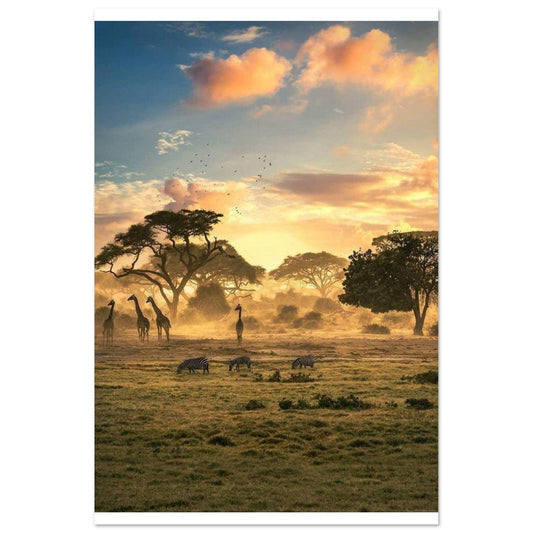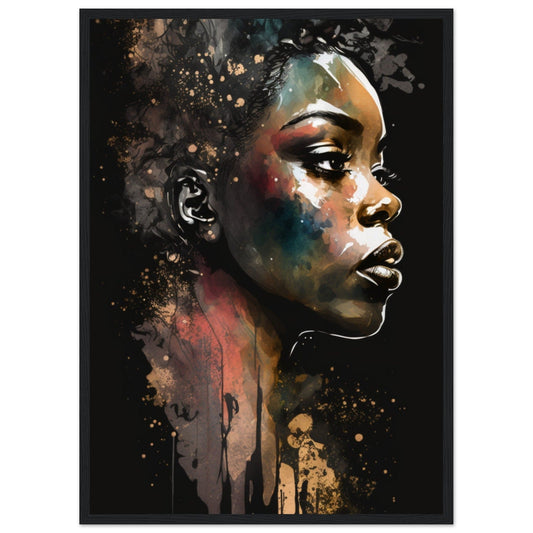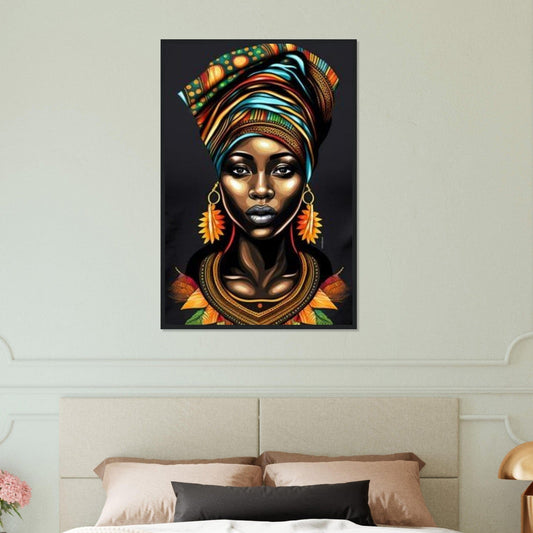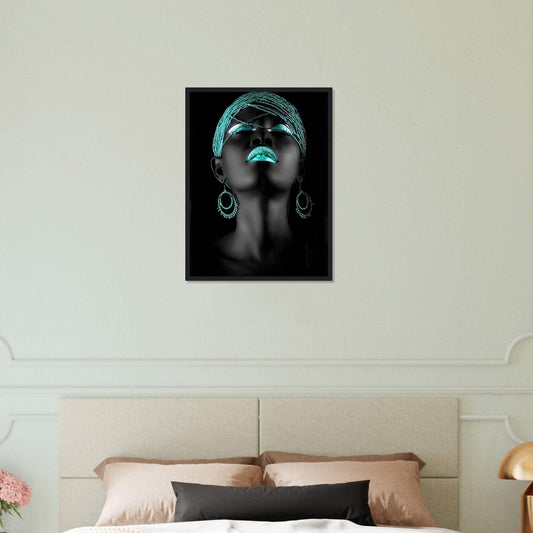-

 Sold out
Sold outAfrican Painting
Regular price From €20,58 EURRegular price€0,00 EURSale price From €20,58 EURSold out -

 Sold out
Sold outAbstract African Painting
Regular price From €65,23 EURRegular price€0,00 EURSale price From €65,23 EURSold out -
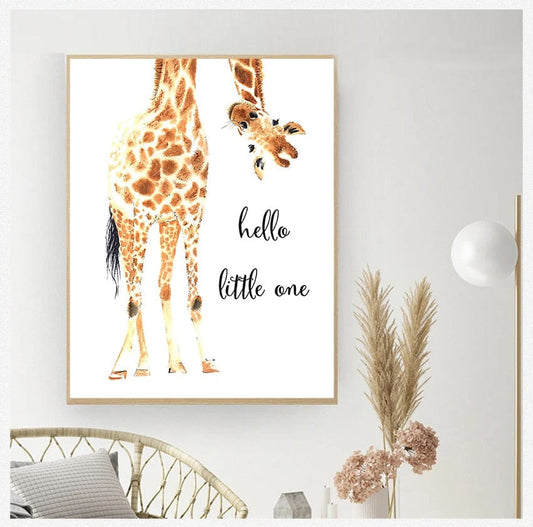
 Sold out
Sold outColor Giraffe Painting
Regular price From €5,05 EURRegular price€0,00 EURSale price From €5,05 EURSold out -
African Dance Painting
Regular price From €73,99 EURRegular price -
African Art painting Woman
Regular price From €73,99 EURRegular price -
African Painting Zimbabwe
Regular price €42,52 EURRegular price -
Modern African Woman Portrait Painting
Regular price From €71,99 EURRegular price -
African Woman Portrait Paintings
Regular price From €71,99 EURRegular price -
Modern African Painting
Regular price From €73,99 EURRegular price -
African Portrait Painting
Regular price From €73,19 EURRegular price -
African Mural Painting
Regular price From €73,99 EURRegular price -
African Map Paintings
Regular price From €73,99 EURRegular price -
African Painting
Regular price From €73,99 EURRegular price -
African Painting Painting
Regular price From €73,99 EURRegular price -
Afro Woman Painting
Regular price From €73,99 EURRegular price -
African Portrait Painting
Regular price From €73,99 EURRegular price
Collection: African Paintings
African art is a fascinating mosaic of creativity, history and cultural diversity. This rich and varied artistic heritage, which spans millennia, is a reflection of the many civilizations, tribes and ethnic groups that make up the African continent. In this article, we will explore African art, its influences, its cultural significance and its impact on the contemporary art world.
Diversity of African Art, A World of Creative Expression
African art is far from homogeneous. The continent is home to more than 2,000 ethnic groups, each with their own artistic traditions, creating an impressive diversity of styles, forms of expression and mediums. From the tribal masks of West Africa, to the wooden sculptures of Southern Africa, to the colorful fabrics of East Africa, each region of Africa makes its unique contribution to art.
1. African Art: A Cultural Mosaic
African art is a true cultural kaleidoscope. The African continent is home to more than 2,000 ethnic groups, each with their own artistic traditions. Patterns, colors and styles vary greatly from region to region, creating an astonishing artistic diversity. From the tribal masks of West Africa to the cave paintings of South Africa, African art reflects the continent's rich cultural history.
2. Masks and Statues: The Treasures of West Africa
West Africa is famous for its masks and statues. These artistic objects are often used in religious ceremonies, rituals of passage and community celebrations. The masks are carved from wood and decorated with symbolic motifs, while the statues represent divine figures, ancestors or tribal leaders.
3. Stone Sculptures of East Africa
East Africa is renowned for its stone sculptures, often carved from soap, granite or onyx. These sculptures frequently depict stylized human figures, animals and elements of nature. The art of East African stone sculpture is marked by great attention to detail and exceptional finesse.
4. Colorful Fabrics from West Africa
West Africa is also famous for its colorful textiles and fabrics. Dyeing, weaving and embroidery techniques are used to create exquisite patterns and designs. African fabrics are often worn as traditional clothing during cultural celebrations and rituals, but they are increasingly appreciated in the world of contemporary fashion.
5. Painting and Wall Decoration
Some regions of Africa are known for their murals and frescoes. These wall art pieces tell stories, legends and cultural values. Murals are often used to decorate community spaces, churches and homes.
6. Contemporary African Art
Contemporary African art is constantly evolving. Today's African artists integrate traditional elements into their works while exploring new forms of expression. International art galleries regularly exhibit African artists, helping to highlight the vitality of the continent's contemporary art scene.
Spirituality and Symbolism Deep
African art is imbued with spirituality and deep symbolism. Masks, statues and ritual objects are often used in religious ceremonies, rites of passage and community celebrations. They are decorated with symbols that tell stories, legends and cultural values. African art is a way to communicate with ancestral spirits and celebrate the connection between man and the divine.
1. Spirituality in African Art
Spirituality is at the heart of African art. Many works, such as masks and statues, are used as part of religious rituals, passage ceremonies, ancestral worship and community celebrations. These artistic objects serve as intermediaries between the world of the living and that of spirits, allowing communication with ancestors and deities.
2. Symbols and Meaning
African art is adorned with deeply meaningful symbols. Each pattern, each color and each shape has a special meaning. For example, geometric patterns and spirals can represent concepts such as fertility, continuity, growth or wisdom. Colors are also symbolic, with red often evoking life, white purity and black death or mourning.
3. Ritual Masks: Carriers of Meaning
African ritual masks are among the continent's most iconic works of art. They are used to embody spirits, ancestors or deities during religious ceremonies. Each mask is unique, with distinctive characteristics that reflect a particular meaning. Masks often represent cultural archetypes and play a central role in maintaining social cohesion.
4. Statues as Guardians of Tradition
African statues, whether made of wood, bronze or stone, often embody ancestral figures, tribal chiefs or deities. They are revered and used to invoke the protection, blessing and wisdom of ancestors. Each statue tells a story and carries the memory of the community to which it belongs.
5. Rites of Passage and Cultural Celebrations
African art plays a central role in rites of passage, such as weddings, funerals, initiation into adulthood and healing ceremonies. Artistic objects are used to mark these stages of life and to celebrate the continuity of culture.
6. Contemporary Art: A Bridge between Tradition and Modernity
Even in contemporary African art, spirituality and symbolism remain key elements. Today's artists often incorporate traditional symbols and motifs into their works while exploring new forms of expression. This creates a bridge between tradition and modernity.
Materials and Techniques Creation
African artists have traditionally used a wide variety of materials to create their works. Wood, stone, bronze, ivory, fabric, terracotta and many other materials were used to fashion sculptures, masks, jewelry and textiles. Carving, weaving, dyeing and decoration techniques vary depending on region and ethnic group, adding to the richness of African art.
1. Wooden Sculpture: An Ancient Tradition
Wooden sculpture is one of the most emblematic techniques of African art. Artists use wood to create statues, masks, figures and ritual objects. The variety of woods used varies depending on the region, offering a fascinating palette of colors and textures.
2. Stone Sculpture: The Beauty of Solidity
Stone carving is a commonly used technique in Africa, particularly in the East and Southern African regions. Artists carve stone to create statues, carved heads, pillars and monuments. Stone, through its solidity and durability, allows us to create works of art that stand the test of time.
3. Terracotta: Hand-Modulated Creativity
Terracotta is used to create a variety of artistic objects, such as pottery, figurines and masks. The artists shape the damp earth by hand before firing it to harden it. Terracotta is particularly widespread in West Africa.
4. Bronze Sculpture: A Delicate Art
Bronze sculpture is an artistic tradition, mainly in the Kingdom of Benin (now Nigeria). The artists create works in wax which they cover with bronze using the lost wax casting technique. Bronze sculptures are often depictions of tribal leaders, warriors and deities.
5. Weaving and Textiles: Vibrant Colors and Patterns
African textiles are renowned for their vibrant colors and intricate patterns. Weaving and dyeing techniques are used to create fabrics which are then used to make clothing, blankets, bags and rugs. Each region of Africa has its own style of weaving and dyeing.
6. Wall Decoration and Painting
Wall decoration and painting are commonly used to adorn homes, community buildings and churches. Artists use murals, frescoes and painted designs to tell stories, legends and cultural values.
7. Dyeing Techniques: Coloring Life
Dyeing techniques are used to give color to fabrics and textiles. Indigo dyeing, batik and hand dyeing are some of the methods used to create vibrant patterns and designs on African fabrics.
8. Embroidery and Beading: The Art of Decoration
Embroidery and the addition of beads are commonly used to adorn clothing, bags and textiles. The elaborate designs created using these techniques add a touch of sophistication to many African artworks.
History and Influence throughout the ages
African art has a rich history dating back thousands of years. The earliest traces of African art date back to prehistory, but the peak of its creativity occurred across the continent's great civilizations, such as ancient Egypt, the Kingdom of Aksum, the Kingdom of Benin, and many others. others. African artworks have also significantly influenced Western art, including the art movements of Cubism and Surrealism.
1. The Ancient Roots of African Art
The history of African art dates back millennia. The earliest traces of African art are cave paintings dating back to the Stone Age, which are found in caves and rock shelters across the continent. These paintings offer valuable insight into early African civilizations and their spiritual beliefs.
2. The Splendor of Ancient Egypt
Ancient Egypt, located in North Africa, left a remarkable artistic legacy. The hieroglyphs, stone sculptures and frescoes of the pyramids bear witness to the artistic ingenuity of this civilization. Egyptian art also significantly influenced Western art.
3. The Kingdom of Aksum: The Stone Crosses of Ethiopia
The kingdom of Aksum, located in present-day Ethiopia, left an impressive series of stone crosses. These crosses, carved into rock, are used to mark Ethiopian Orthodox churches and are an example of unique African religious art.
4. The Kingdom of Benin: The Art of Bronze Casting
The kingdom of Benin, located in what is now Nigeria, is famous for its art of bronze casting. Bronze sculptures from Benin often depict tribal leaders, warriors and deities. This art played a central role in preserving the history and culture of the kingdom.
5. Contemporary Art: A Window on the World
African art continues to influence and inspire the contemporary art world. Contemporary African artists, such as El Anatsui, Yinka Shonibare and William Kentridge, integrate elements of tradition while exploring new forms of expression. International galleries regularly exhibit their works, highlighting the vitality of the African art scene.
6. The Influence of African Art on Western Art
African art has had a profound impact on Western art. In the early 20th century, European artists, such as Picasso and Matisse, were heavily influenced by African aesthetics and art forms, contributing to the development of the primitivism art movement.
7. The Reinvention of Traditional Art
Traditional African art continues to be a source of inspiration for many contemporary artists around the world. Themes of spirituality, community and the celebration of African culture are explored through new perspectives and techniques.
African Art in the Contemporary World : A Dynamic Legacy
African art continues to influence and inspire the contemporary art world. Many contemporary African artists create innovative works that combine tradition and modernity. International art galleries regularly exhibit African artists, helping to highlight the diversity and vitality of the African art scene.
1. Contemporary African Artists
Contemporary African art is driven by a new generation of talented artists who are exploring new artistic avenues. These artists create innovative works while drawing inspiration from their cultural heritage. They use a variety of mediums including painting, sculpture, photography, video, performance and conceptual art.
2. The International Galleries
Contemporary African art works are exhibited in galleries around the world. Cities such as Lagos, Dakar, Johannesburg and Addis Ababa have become artistic hubs where contemporary African artists are in the spotlight. International galleries regularly exhibit these artists, thus helping to highlight the vitality of the African art scene.
3. Exploration of Current Themes
Contemporary African artists address a variety of current themes, including migration, identity, globalization, climate change, politics and social issues. Their work reflects the complexity of the contemporary world and engages in important conversations on these topics.
4. Art and Cultural Identity
Contemporary African art plays a central role in preserving cultural identity. The artists celebrate African traditions, customs and values while adapting them to the modern context. They also question the question of African identity in the era of globalization.
5. Mixture of Tradition and Modernity
Many contemporary African artists skillfully blend traditional elements with modern mediums and techniques. This fusion creates works that are both rooted in tradition and resolutely contemporary.
6. Influence on Fashion and Design
Contemporary African art also influences the world of fashion and design. African patterns, colors and motifs are often used in fashion clothing, interior design and product design. Designers around the world are inspired by African aesthetics to create unique and elegant pieces.
7. African Art Festivals
African art festivals, such as the Dakar Biennale in Senegal and the Bamako Biennale in Mali, are major events that celebrate contemporary African art. They bring together artists, critics, collectors and art lovers from around the world to celebrate African creativity.
In conclusion, African art in the contemporary world is a dynamic force that continues to thrive and inspire. Contemporary African artists are exploring new artistic territories while remaining faithful to their cultural heritage. Their work engages important conversations about global issues while celebrating the beauty, diversity and depth of African art.












